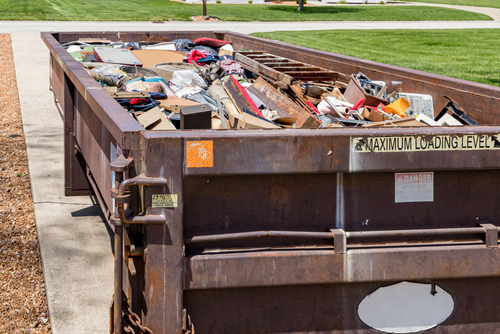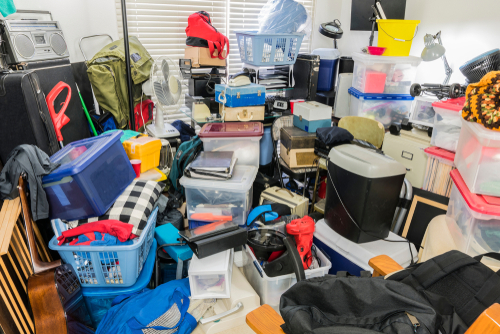Hoarding is a persistent difficulty in discarding or parting with possessions, regardless of their actual value. This behavior can affect anyone, regardless of age or economic status, and it often has a profound impact on various aspects of one’s life, including personal relationships, health, and safety. Hoarding disorder, now recognized as a distinct mental health condition, goes beyond common clutter and collection; it is characterized by a compulsive need to acquire items and an inability to discard them, leading to a state of excessive accumulation.
Overcoming this disorder involves understanding the underlying emotional attachments to possessions and confronting the anxieties associated with letting them go. Various strategies, including cognitive behavioral therapy, can be effective in addressing the thought patterns that contribute to hoarding behaviors. Self-help strategies and seeking support also play crucial roles in managing and treating the disorder. Creating a structured action plan and approach for decluttering can lead to improved mental well-being and a healthier, safer living environment.
 Hoarding disorder can be effectively managed through specialized treatment methods. Your journey towards managing hoarding begins with understanding the most effective therapies and constructing a personalized treatment plan in consultation with health care professionals.
Hoarding disorder can be effectively managed through specialized treatment methods. Your journey towards managing hoarding begins with understanding the most effective therapies and constructing a personalized treatment plan in consultation with health care professionals.
 When you’re assisting someone with hoarding disorder, it’s essential to approach them with empathy, offer tangible support, and set realistic expectations for progress. It’s a challenging situation that requires patience and understanding from both family members and friends.
When you’re assisting someone with hoarding disorder, it’s essential to approach them with empathy, offer tangible support, and set realistic expectations for progress. It’s a challenging situation that requires patience and understanding from both family members and friends.
Key Takeaways
- Recognizing hoarding tendencies is the first step to addressing the disorder.
- Cognitive behavioral therapy and self-help strategies are key components in treatment.
- Structured decluttering can lead to significant improvements in quality of life.
Understanding Hoarding
Hoarding behavior goes beyond collecting or keeping sentimental items; it’s a persistent difficulty in parting with possessions due to a perceived need to save them.Defining Hoarding and Hoarding Disorder
Hoarding is the persistent difficulty in discarding or parting with possessions, irrespective of their actual value. Hoarding Disorder is a recognized mental health condition, categorized as a distinct anxiety disorder similar in some ways to OCD (Obsessive-Compulsive Disorder). It far exceeds normal collecting behaviors, causing significant clutter and impairment in your living spaces.Psychological Causes of Hoarding
The urge to hoard often stems from a deep-seated anxiety that discarding anything can lead to a loss of an important item or memory. This behavior may also be associated with an attempt to fill an emotional void or to retain control. Understanding these psychological roots can be a key step in seeking appropriate help, as interventions such as cognitive behavioral therapy have been shown to be effective.Identifying Symptoms and Diagnosis
To identify symptoms of Hoarding Disorder, pay close attention to distress or functional impairments caused by hoarded items. Some signs include:- Inability to use living spaces as intended due to clutter
- Strong attachment to possessions, regardless of value
- Difficulty organizing, leading to significant distress when attempting to declutter
Effects of Hoarding
Hoarding can profoundly disrupt your life, affecting your overall health, daily living conditions, relationships, and safety. Understanding the full range of these effects is vital to recognizing the seriousness of hoarding behavior.Impact on Health and Daily Life
Your physical health can suffer significantly due to hoarding. It often leads to unsanitary living conditions that could make you susceptible to chronic illnesses. For example, congested spaces might trigger or worsen respiratory issues due to dust and mold growth. Compulsive hoarding also often interferes with your ability to perform daily activities like cooking, cleaning, or sleeping due to the lack of usable space.- Chronic Respiratory Diseases: Exacerbated by dust and mold.
- Injuries: Increased risk from clutter causing falls.
- Sleep Quality: Diminished due to an overcrowded environment.
Hoarding and Its Effect on Relationships
Your relationships often experience strain as hoarding behavior escalates. Friends and family members might feel confusion and frustration, not understanding the condition’s complexity. Attending social functions at home becomes nearly impossible, and the embarrassment of the living conditions might lead you to isolate yourself, leading to a significant impact on your mental health.- Social Isolation: May lead to depression or anxiety.
- Family Stress: Strain from the living environment leading to conflict.
Risks Associated with Hoarding Behavior
Hoarding behavior can create unsafe living conditions, transforming your home into a fire hazard due to blocked exits or piled materials that could easily ignite. In extreme cases, the weight of accumulated items can threaten the structural integrity of your living space. If your mobility or that of someone living with you is compromised, especially in old age, navigating a hoarded space can be particularly hazardous.- Fire Risk: Accumulated items can obstruct exits and pose ignition risks.
- Structural Damage: Heavy clutter could compromise your home’s stability.
- Mobility Hazards: Impaired safety for individuals with reduced mobility.
Treating Hoarding Disorder
 Hoarding disorder can be effectively managed through specialized treatment methods. Your journey towards managing hoarding begins with understanding the most effective therapies and constructing a personalized treatment plan in consultation with health care professionals.
Hoarding disorder can be effectively managed through specialized treatment methods. Your journey towards managing hoarding begins with understanding the most effective therapies and constructing a personalized treatment plan in consultation with health care professionals.
Therapies for Hoarding Disorder
Cognitive Behavioral Therapy (CBT): CBT is a cornerstone in the treatment of hoarding disorder. It helps you recognize harmful thought patterns and teaches you to challenge and change them. By working with a therapist experienced in CBT, you can learn to:- Identify and alter beliefs related to acquiring and saving items.
- Develop organizational skills.
- Reduce the compulsion to hoard.
- Exposure therapy to reduce avoidance behavior.
- Practical assistance with decluttering.
Medication and Hoarding
Though therapy is the primary treatment for hoarding disorder, in some cases, medication can be beneficial. Antidepressants, particularly those known as SSRIs, have been used to help manage the symptoms. However, medication is typically more effective when used in conjunction with therapy. Always discuss the use of medication with a mental health provider to ensure it aligns with your treatment plan.Creating a Treatment Plan
Your treatment plan is a structured approach to tackling hoarding disorder. Begin by setting achievable goals for decluttering and avoiding new acquisitions. Work with your health care provider to:- Establish milestones and strategies for reaching them.
- Integrate therapy sessions and potential medication into your schedule.
- Plan for ongoing support to maintain progress.
Self-help Strategies
Conquering hoarding requires a combination of strong personal motivation, enhanced organization skills, and refined decision-making abilities. Each skill set is crucial in creating and maintaining a clutter-free environment.Building Motivation
Your success in overcoming hoarding hinges on your motivation. Start by envisioning a clear and attainable goal — perhaps, a functional and peaceful living space. Write down how this change will positively influence your life, from reduced stress to improved social interactions. Keeping a motivation inventory helps in reinforcing the reasons why you want to change.Improving Organization Skills
Boost your organization skills by dividing your space into zones. For each zone, categorize items that should be kept, donated, or thrown away. Learn to organize effectively by putting similar items together. This skill will not only simplify cleaning but will also enhance your memory recall and profoundly decrease the sense of chaos that disorganization brings.Developing Decision Making Abilities
Decision-making is vital in combating hoarding behaviors. Adopt a methodical approach to evaluating items — for instance, asking yourself if you’ve used the item within the past year. If you haven’t, it’s likely dispensable. Applying steadfast rules eases the burden of making choices and is a practical strategy for reducing accumulated items. For further guidance, you might benefit from cognitive behavioral techniques designed to improve your problem-solving skills.Support and Resources
Seeking help for hoarding is a significant step towards improvement. Knowing where to find professional help and how to tap into support networks can make a crucial difference in your journey to address hoarding behavior.Finding Professional Help
For professional assistance, a mental health provider specializing in hoarding disorder is essential. Cognitive-behavioral therapy (CBT) has been shown to be an effective treatment for hoarding disorder. To connect with the right therapist, consider utilizing directories such as those provided by the International OCD Foundation. It’s essential to choose professionals with experience in treating hoarding to ensure the most effective strategies are used to address your specific needs.Leveraging Support Groups and Community Resources
In addition to professional help, joining a support group can provide crucial emotional support and practical advice from others who understand what you’re going through. Whether it’s an in-person meeting or an online community, sharing experiences with others can be an invaluable resource. Explore options like Hoarding UK, which offers access to support groups, both in-person and online. Sharing your experiences with family and friends can also provide a network of support, helping to create a supportive environment for change. Community resources often include local hoarding task forces, which can give guidance on how to manage your situation and connect you with other much-needed services.Helping Someone with Hoarding Disorder
 When you’re assisting someone with hoarding disorder, it’s essential to approach them with empathy, offer tangible support, and set realistic expectations for progress. It’s a challenging situation that requires patience and understanding from both family members and friends.
When you’re assisting someone with hoarding disorder, it’s essential to approach them with empathy, offer tangible support, and set realistic expectations for progress. It’s a challenging situation that requires patience and understanding from both family members and friends.
Approaching the Conversation
Initiating dialogue with a loved one about their hoarding habits can be sensitive. Prepare for the conversation by educating yourself about hoarding disorder. Approach them at a time when they’re most likely to be receptive, ensuring that you’re calm and non-judgmental. Emphasize your concern for their well-being rather than the state of their living space.Providing Practical Assistance
Once they’re open to the idea of decluttering, offer practical help. This could range from organizing, cleaning, or suggesting they call a professional cleaning service. Be ready with specific tasks in manageable chunks, like sorting through a single drawer or clearing a countertop, to avoid overwhelming them. You can find information about hoarding support groups in the UK and a helpline at Hoarding UK.Managing Expectations and Progress
Acknowledge that progress may be slow and will likely involve setbacks. Set realistic goals and celebrate small victories to keep their motivation high. Support them in learning to identify and resist the urge to acquire more items. Remember that managing stress for both of you is important. Keep in mind that recovery is an ongoing process and requires support, with family and friends often being a crucial part of that framework.Organizational Tips and Decluttering
In addressing hoarding tendencies, the key is to establish organizational systems and declutter effectively. This requires both a clear strategy for cleaning and a set method for deciding what items to keep.Effective Cleaning Strategies
To begin reducing clutter, start small. Focus on one area at a time, cleaning systematically and without distraction. Use a timer for pacing yourself during the cleaning process to prevent burnout and to ensure that you maintain momentum. A simple strategy is the four-box method:- Keep: Items you use regularly and that bring value to your life.
- Donate/Give Away: Items that are useful but not for you personally.
- Trash: Items that are broken, expired, or damaged beyond repair.
- Store: Seasonal items or things not needed regularly.
Deciding What to Keep and What to Discard
When assessing what items to keep, ask yourself these questions:- When was the last time I used this?
- Does this item serve a purpose in my life?
- Does this item bring me joy or does it cause anxiety?
Maintaining a Clutter-Free Space
Once you’ve decluttered, it’s essential to maintain the tidiness. One strategy is the “one in, one out” rule—when a new item enters your home, ensure an existing item leaves. Regularly revisit areas you’ve organized to prevent re-accumulation of clutter. Daily decluttering habits, even if it’s just five minutes a day, can sustain a clutter-free environment and reinforce your organizational habits.Legal and Ethical Considerations
When addressing hoarding behavior, you must consider both the legal and ethical implications. These include protecting the rights of the individual while ensuring safety and compliance with laws.Understanding Guardianship and Advocacy
In severe hoarding cases, questions often arise about the individual’s capacity to make decisions regarding their welfare and living conditions. Guardianship could be considered when you are no longer able to manage your day-to-day life and financial affairs due to hoarding. Guardianship means a court appoints someone to make legal decisions on your behalf. In less severe situations, or as a step before considering guardianship, advocacy groups could provide support and intervene to improve your living conditions while preserving your autonomy.Addressing Severe Hoarding Cases Legally
For severe hoarding cases, legal intervention might become necessary, especially if there’s a risk to the health and safety of yourself or others. This could involve forced cleanouts, eviction, or legal action. Local health departments and the legal system get involved when the hoarding poses a public safety hazard. Legal proceedings should balance respect for personal freedoms with the necessity to address the risks associated with hoarding.Frequently Asked Questions
In this section, you’ll find targeted advice to tackle hoarding issues, from initial steps to specific strategies for various circumstances.Where can I start to overcome my hoarding habits?
To begin addressing your hoarding habits, cognitive behavioral therapy (CBT) is widely recognized as an effective treatment. You might also identify and challenge the thoughts that contribute to acquiring and saving items.What strategies can couples use to address hoarding behavior in their relationship?
Couples can work together by establishing clear communication and setting mutual goals for decluttering. Professional therapy can provide constructive ways to navigate the emotional complexities of hoarding within a relationship.How can I assist someone in decluttering if they are struggling with hoarding?
When helping someone declutter, it is crucial to be patient and empathetic. Offer support by helping them recognize the value of letting go of items and celebrating small successes in the decluttering process.Are there any government programs available to assist individuals with hoarding disorder?
While support varies by location, some areas may offer community or government-funded programs aimed at helping those with hoarding disorder. Reach out to local health services or mental health organizations for information on available resources.What methods are effective for managing the accumulation of excess clothing?
An effective method for managing excess clothing is to categorize items and set limits on the number you can keep. Designate a specific area for clothing and commit to not exceeding this space, as maintaining physical boundaries can help control the urge to accumulate more.What are some interventions for someone with hoarding disorder who is resistant to help?
For someone resistant to help, start with harm reduction strategies and build trust gradually. Engaging in non-confrontational discussions about their hoarding behavior’s impact can initiate the process towards seeking professional assistance.RECENT BLOGS
Our Reviews
Glenda Lanier Prowell
1721758635
I have ordered an 11 yard dumpster to be delivered to my house.Lonier was extremely helpful and answered all my questions. The rate was very reasonable.
Cedric Smikle
1721660395
Amber was extremely professional and courteous. She answered all of my questions and even some that I didn’t know I needed to ask.
Cait Kaider
1721243051
I highly recommend Waste Removal USA for their responsiveness and how the staff work hard to provide exceptional customer service. They have done well by us and our clients. Thank you!
Easom Family
1721223306
Louiner Pierre-Louis Is awesome! Did a great job. Will definitely be using this same company for all my dumpster needs because of his awesome customer service! Thank you!!!
tabitha Vazquez
1720539988
Wonderful and fast customer service!
LATEST BLOGS






